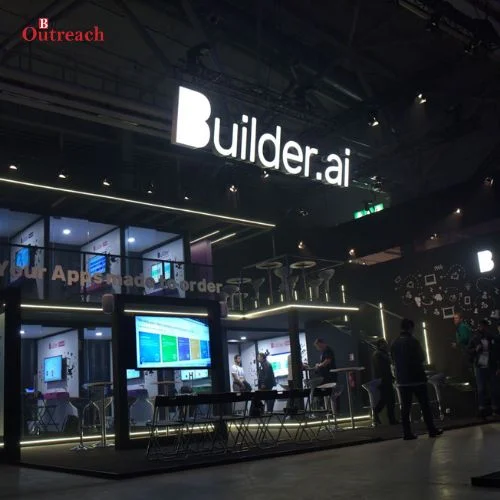Being in the realm of innovation and green technology, Tesla stands out as the best. They started small and now, the future is electric. They’re involved in electric car technology, in green energy and others.
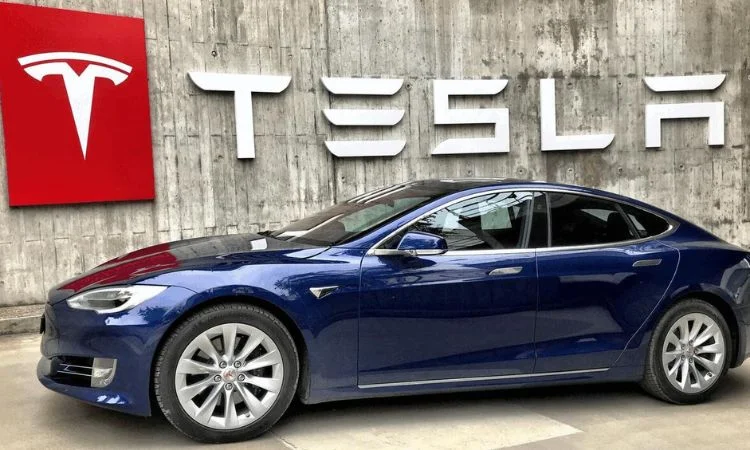
Source: Free Logo Design
Tesla, Inc. is one of the well known American multinational corporations that has automotive and clean energy solutions as its core business field. Bonded in Austin, Texas, Tesla manages to feature electric vehicles in full cycle (design, production and distribution), batteries of stationery kind which are targeted from individual systems (residential) to the larger grids, panel solar and yellow roof Solar, and related commodities and services.
Tesla Success Story: Company Highlights
| Information | Details |
| Company Name | Tesla, Inc. |
| Headquarters | Austin, Texas, United States |
| Industry | Automotive, Renewable Energy, Motor Vehicle Manufacturing |
| Founders | Elon Musk, Martin Eberhard, JB Straubel, Ian Wright, Marc Tarpenning |
| Founded | 2003 |
| Current CEO | Elon Musk |
| Website | tesla.com |
Tesla Success: How Elon Musk Created Tesla And Launched The Era Of Electric Cars
Tesla Motors was incorporated on July 1, 2003, under the name of Tesla Motors in San Carlos, California by Martin Eberhard and Marc Tarpenning as founders of the company. EV1 was a range of electric vehicles ordered by General Motors in 2003 that led to the envision that this entry step had opened a suitable niche for battery-electric vehicles.
Another employee joined the company as the third one six months after. In January 2004, the initial capital was raised in the form of venture capital (VC)in which Elon Musk made a massive investment. It amounts to US$6.5 million of the initial US$7.5 million. Musk did not become the CEO and then picked Eberhard. He was named the chairperson of the board of directors and then named Eberhard to be CEO. J.B. Straubel signed Elson Mack in May 2004 as the fifth among the team members. A deal signed in the fall of 2009 gave credits to all five founders including Eberhard, Tarpenning, Wright, Musk and Straubel.
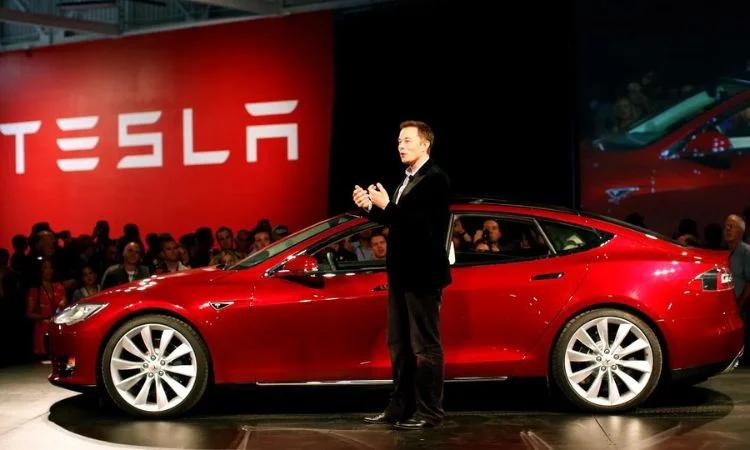
Source: Aaj Tak
While Musk himself had been very into the design of the Roadster, his contribution to the everyday operations has been limited. He paid much attention to a carbon-fiber-reinforced polymer body and it was indeed a breakthrough, which was recognized by the environmental body, INDEX Design award. It was even awarded the 2006 Global Green product design award.
At the base of Tesla’s strategy there is Musk’s consistent communication of the purpose of the company, which is largely that of offering affordable mass-market electric vehicles to the market. At first, the ideas of the founder of Tesla were brought to life by the production of premium sports cars. This was the initial market that helped the company to succeed and expand to a range of consumer vehicles such as sedans, and compact cars.
Main rounds of investment led by Musk in February 2005, May 2006, and May 2008 were the driving force that accumulated a large amount of private capital in the company, over US$100 million. Animating music, such as the participation of Google co-founders Larry Page and Sergey Brin, former eBay President Jeff Skoll, and different venture capital firms, were noteworthy changes.
Along with Tesla’s corporate mission, the year 2006 saw the beginning of the partnership with SolarCity as a step-by-step move in the direction of co-marketing photovoltaic solar panels, which was aimed at the promotion of solar-powered at-home carports to buyers who wished to achieve energy neutrality in cars.
Tesla’s CEO Transition Saga: Also, From Eberhard To Musk
Eberhard became the CEO until August 2007 when the board requested that he leave the position of CEO. Before that, Eberhard moved up the ranks to eventually become President of Technology. He left the company, however, in January 2008. On the other hand, Marc Tarpenning, the co-founder and the vice president of Electrical Engineering, also turned his back to the company in January 2008.
Human labor has experienced significant structural changes, and in response, Michael Marks was appointed interim CEO in August 2007, and then the role of CEO and President were assumed by Ze’ev Drori in December 2007.
Last, in January 2008, the Musk-led Tesla went through a reorganization drawing the dismissal of several key personalities since the inception of the company due to poor performance rating.
Because that was what Elon Musk who later was the foremost person in the Tesla journey had to do to tackle the financial challenges of 2007 that demanded there about 10% of workforce reduction had to be to cut the company’s burn rate. However, no sooner had Drori handed over the baton to Musk in October 2008, than there was a reduction in the workforce by 25%. The layoff was from the workforce of Tesla Motors. While he moved up to the role of vice chairman, Drori eventually had to leave the firm in December of 2008.
At the end of 2008, in December, Tesla managed to secure another round of investment that transformed into debt financing, thus improving Tesla’s position in the market, resulting in an additional US$40 million for capital and ultimately avoiding the potential bankruptcy Tesla had been facing.
By the beginning of January 2009, the number of the plugged-in community rose to 147 and the company raised the state of the art money of 187 million dollars. Elon Musk, who called to arms the company’s management, put in US$70 million of personal funds as part of Tesla resources.
On 19 Of May, 2009. Daimler AG Co also known as the private company which owns the world-renowned brand cars Mercedez-Benz purchased Tesla equity shares, below 10%. The price paid was reported to be US$50 million. While Musk acknowledges that this primary investment from Daimler has aided greatly in assuring Tesla’s future, it is not all attributed to the sustainability of Tesla.
In the month of July, 2009, Daimler disclosed that Abu Dhabi’s Aabar Investments bought about 40% of the share of Daimler in Tesla, a move that made Tesla a more financially stable auto firm with great prospects of growth.
Tesla Success Story: Business Model
The Tesla business model map is on point, i.e. each area contains several key components bringing up the key parts of the overall business strategy. However, it prominently centers on three primary pillars: servicing model, distribution, and availing of charging facilities.
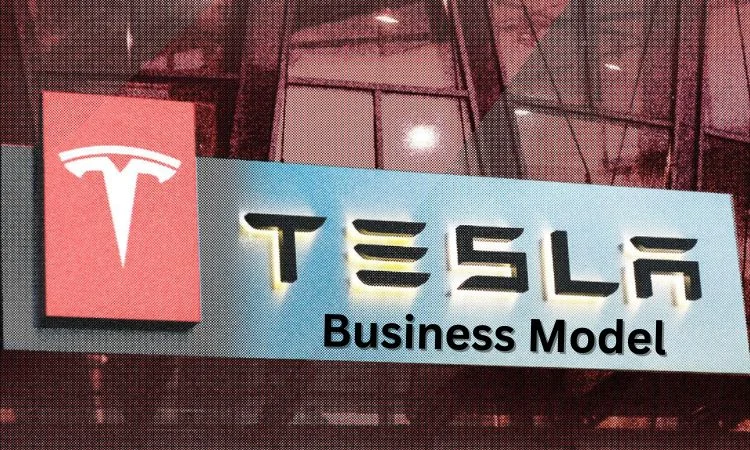
source: The street
Those foundational elements are essential to Tesla’s operational structure, providing a unified framework for maintenance and support services while implementing sales methods that are responsive to the particularities of the electric vehicle market, and also a strong charging network which makes the ownership experience with Tesla’s vehicles a lot more attractive for customers.
Tesla: Value Propositions
Tesla provides benefit-adding solutions to customers in its model by bringing environmentally friendly product designs that outperform traditional vehicles, lower energy costs and better battery life and also by offering excellent style and comfort. Apart from Tesla’s popular Electric Vehicles that are now being used in both residential and commercial applications, the company is now offering solar panels and home batteries tailored for these application categories. The products aim to achieve tangible improvements in power supply resources services in terms of accessibility and efficiency.
In fact, beyond its own vehicle line, Tesla employs this business model in that it supplies systems and equipment to other car manufacturers as well. Along with Tesla’s evolution, it has also expanded its business into the financial industry and customers of Tesla now have the option to lease and pay in installments.
Tesla Success Story: Customer Segments
Through the combination of sports car type S, Model X with its crossover nature and a mass-market Model 3, Tesla has reached a myriad of customers. These are, among others, the high-income people, the environmentally conscious who want eco-friendly ways to move around, and the fleet operating companies that are into earth-friendly modes of transportation. The petrolheads who value their love for high-performance cars are also part of this group.
This list is also completed by the top executives of wealthy companies and the following of Elon Musk who commands an impressive society Also, due to the high expectations on the environmentally conscious means of travel Tesla gathers more admirers linking with the cars that are set up to run on a sustainable fuel.
Tesla : Key Partners
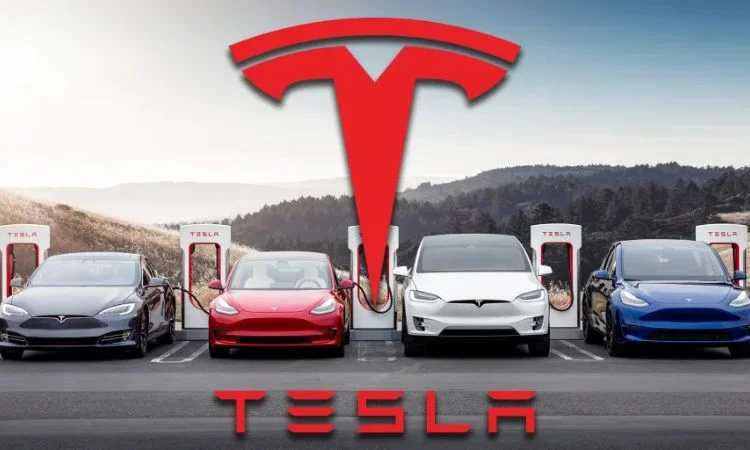
Source: Electrek
The partners, both active and key, are all important in the rich fabric of Tesla’s business model. They make sure that every critical part works properly and that all customers are happy.
These partners range in sectors, organizations, and individuals, yet they remain distinctive in their separate roles and contribution to Tesla’s successive journey. Especially noticeable is partnership with top-rated OEMs (Daimler and Toyota), which allow Tesla to benefit from the best available engineering expertise of the engineering industry, research and development facilities, and, what is very crucial – funding in cash.
Moreover, collaborative agreements with industrial partners such as LG Chem Ltd and Contemporary Amperex Technology Co Ltd as well as joint venture arrangements with manufacturing associates are sensitive indicators of Tesla’s desire to be creative and to achieve the scale that it desires. Tesla also applies the partnership process with leasing companies for fleet services and they, in turn, collaborate with hospitality establishments and agricultural centers to build the wide-scale charging infrastructure for their electric vehicles so that its customers would not face the problem of accessibility and convenience.
Tesla Success Story: Key Activities
Tesla’s key activities revolve around four primary pillars, each integral to its overarching business strategy:
1. Car Manufacturing: Steering the business steps towards production of electric vehicles has been the central core of the company with additional goodies such as accessories that ensure user experience and performance are well met.
2. Research and Development (R&D): To crown it all, innovation is the promising factor of Tesla’s success as it perpetually advances electric vehicle technology, as well as solutions on clean energy. Tesla stands out at the front line of innovation in the auto industry by having robust R&D initiatives get bone with feverish border pushing and industry reshaping.
3. Strategic Partnerships and Collaborations: With an active role in the development of relationships with stakeholders not just within the automotive sector but also technology, Tesla has been able to take advantage of synergies that will help accelerate innovation, expand market reach and drive sustainable growth.
4. Infrastructure Development: In order to ensure that charging networks remain materials, Tesla establishes its own network of charging units at premium spots like resorts, eateries, malls, and hotels where customers can connect seamlessly and get neat.
Customer Relationships at Tesla
Tesla is taking advantage of the growing demand for electric vehicles by applying a strategic focus on relations with customers, which is the company’s lifelong key to growth. Tesla marches to the beat of a different drum, providing superior customer experiences as opposed to the other companies that adhere to the conventional dealer model.
On the other hand, Tesla prefers company-owned stores and an intuitive online platform, which ultimately make it possible for the customer to choose a vehicle, customize it, and make an order without any problems. Significantly, the charging networks on a large scale that allow drivers a chance of charging all across California ensure all users find the charging process easier and less expensive.
At the core of Tesla’s brand equity stands its unslackened pledge to reveal such comfort, innovation, and high technologies and to give concern for and do good to the environment at the same time.
Tesla Success Story: Key Resources
The Tesla business model is founded upon resource integration which is a very important fact that enables Tesla to run key operations and to offer a distinctive value proposition. The resources cover the most advanced domestic electromobiles production, the best battery manufacturing industry, the highest expertise in engineering and designing in the country, the most complex and intelligent software systems, etc.
Such powerful parts of all these elements keep bringing about fresh innovations and consequently, make Tesla meet the company’s objective: contribution towards green technology.
Channels at Tesla
Tesla’s adopt a customer-centered way of selling, this means engaging directly with clients as soon as possible while at the same time making sure they get immediate and direct feedback post-purchase. Truly, Tesla maintains a high profile showcasing/selling its products via retail stores and galleries. Albeit some of the physical outlets morph human goods retail into online and the Tesla website remains a key self-service solution at the disposal of the customer.
Thus, the online platform is an instrument that enables customers to widen and go through the list of vehicle options that are presented before visiting car dealers physically and, consequently, improving the convenience in the vehicular selection process for Tesla customer portfolio.
Tesla: Revenue Model
The Tesla Inc. is a business company that endeavors in penetrating into a wide scope with the main interest in being innovative and green. Aside from their star private vehicles of its electric philosophy, the company has also built a very strong environmentally-friendly mode of transportation for the entire ecosystem.
Furthermore, Tesla has ventured into lifestyle offerings and solar energy technologies, catering to the discerning preferences of its dedicated clientele and enthusiasts.
Tesla Changed The Car Industry A Lot
Electric Vehicle (EV) Technology: Texas stood for and advanced the use of electric cars, competing with the rulers of shale oil, gas and coal. Tailpipe emissions from electric propulsion the Tesla car gave was zero. This made the car a welcome thing for environmentalists.
Range and Performance: Tesla’s cars served as an eloquent exhibit that a combination of a high range, and top level performance could get achieved on electric motors too. Models like the Model S and Model X were offering impressive power and acceleration in the class with long-range capabilities that arguably surpassed a lot of the gas-powered cars of that time and thus dispelled the myth that EVs could not perform comparably or better than the traditional gasoline-powered cars.
Supercharger Network: In pursuit of establishing his own network of high-power Supercharger stations, Tesla poured out a lot of money. The latter will be fast charging his vehicles. It resolved “range anxiety” by equipment which offered the foundation important for long-distance commute (something other EV manufacturers couldn’t get exactly).
Autonomous Driving Technology: One of the pioneers in this industry is Tesla, which focused on deploying autonomous driving technology. For example, autonomous driving aided by Autopilot and Full Self-Driving (FSD) illustrates potential to change the paradigm for consumers while pointing to new demands of automotive technologies.
Direct-to-Consumer Sales Model: Tesla had the direct-to-consumer sales model which questioned the dealership model conventions, allowing the carmaker both the pricing side and distribution as well as customer satisfaction issues under their control. Through this strategy, Tesla was able to maintain direct relationships with consumers and thus created a distinct brand. It avoided middlemen thus.
Brand Image and Innovation: The innovative focus of Tesla, committed to sustainability and the use of cutting-edge technology, enables it to succeed in creating an image of the brand that is the most beautiful for the tech-savvy consumers. The company’s CEO, Elon Musk, is well-known for his bold thinking and audacity when it comes to taking risks that really serve only to increase the company’s standing as the disruptor in the auto industry.
Tesla Energy Operations: Leaders In Solar Solution And Battery Storage
Tesla Energy Ops. is the sustainable energy subsidiary of Tesla Inc. that is engaged in the design, development and marketing of photovoltaic solar energy systems, battery energy storage solutions and associated products and services for both residential, commercial and industrial clients.
Cylindrical battery, which was developed for electric vehicles in the beginning, is at the core of this company. Powerwall is a product developed by this division that uses this technology to bring additional power for home energy storage. Then, in November 2016, after that, Tesla made its offer to acquire SolarCity for $2.6 billion, and consequently, it integrated solar energy generation within its own operations. Particularly, critics referred to the buyout as SolarCity would have been a risky quest at the time the purchase took place.
The division ventures into solar modules (obtained outsourced from outside manufacturers for Tesla’s distribution), the highly-innovative Tesla Solar Roof (this is a solar’s feature shingle), and the Tesla Solar Inverter. Furthermore, the company provides the Megapack, a powerful industrial-sized energy storage solution, which is backed by the company’s own in-house software created to bring the best performance by optimizing the whole energy product range.
Tesla Energy Operations last year, especially in 2023, was a feast of success; the organization deployed 223 megawatts (MW) of solar initiatives, although there were 36% fewer than the preceding year. On the contrary it became clear that battery energy storage product deployments dramatically jumped from 6.6 to 14.7 GWh during that year. This mind-boggling performance resulted in a very considerable revenue increase, the division earning $6.04 billion generating the 55% of the company total revenue which outperformed the $3.92 billion figure reported in 2022.
Primarily, Tesla derives its revenue from two primary sources:
1. Automotive Segment Revenue: This encompasses proceeds generated from vehicle sales across various models, software enhancements, access to the charging network, sales services, retail merchandise, and the sale of electric vehicle components.
2. Storage and Energy Generation Segment: This segment encompasses revenue streams derived from storage products such as solar panels and Tesla’s advanced solar energy systems, reflecting the company’s commitment to sustainable energy solutions.
Tesla : Partnership
| Company | Product |
| AGC Automotive | Windshields |
| Brembo | Brakes |
| Fisher Dynamics | Power Seats |
| Inteva Products | Instrument Panel |
| Modine Manufacturing Co. | Battery Chiller |
| Sika | Acoustic Dampers |
| Stabilus | Liftgate Gas Spring |
| ZF Lenksysteme | Power Steering Mechanism |
Tesla : Investments
| Date | Organization Name | Round | Amount |
| Nov 16, 2022 | Aescape | Series A | $30 million |
| Jul 24, 2022 | Coredax | Venture Round | ₩22 billion |
| Jan 20, 2018 | Zola Electric | Series D | $55 million |
Tesla: Top Competitors
| Competitor |
| Ford Motors Co. |
| Volkswagen |
| General Motors Co. |
| Nikola Corporation |
| Canoo Inc. |
| NIO |
| Li Auto |
Conclusion
In conclusion, Tesla’s journey from its inception to its current status as a leader in innovation and green technology is marked by a relentless pursuit of big ideas and game-changing moves. Founded in 2003, Tesla started small but quickly gained momentum, fueled by visionary leaders like Elon Musk.










